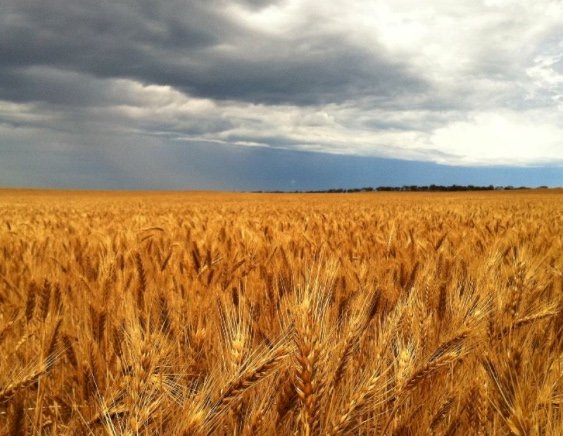China opens the door to Russian cereal imports…
- By: "Farm Tender" News
- Cropping & Grain News
- Feb 08, 2022
- 429 views
- Share

By Peter McMeekin
The 2022 Beijing winter Olympic games were officially opened last Friday with a spectacular opening ceremony. Russian President Vladimir Putin and China’s President Xi Jinping attended the celebrations after earlier holding face-to-face talks for the first time in more than two years.
It was later announced that China had agreed to allow imports of wheat and barley from all regions of Russia. Up to now, imports have been restricted due to phytosanitary concerns, in particular the dwarf bunt fungus, which is common to many grain-growing regions of Russia. China had previously allowed imports from seven Russian regions, none of which were major grain-growing areas.
Russia has long wanted to expand cereal trade with China. Last week's agreement opens up sales opportunities to a country that has emerged as a significant importer of wheat and barley. Russian wheat exports have been gaining traction into countries such as Algeria and Saudi Arabia in recent years after the importers changed the terms of their tenders to include wheat of Russian origin. China was one of the few major destinations that remained unconquered for the Black Sea export powerhouse.
China has been an important destination for French wheat over the last two years, and the significance of the market to French farmers escalated in 2021 as the European Union’s biggest wheat exporter lost market share into Algeria. While Algeria remains the biggest destination for European Union wheat in the 2021/22 marketing year, China has climbed into third place, just behind Egypt.
The move is also likely to be a big blow to the United States which has been desperately trying to increase wheat sales to China as part of the Phase One trade deal struck between the two countries in January 2020.
However, with the wheat export restrictions currently in place in Russia, the sales campaign to China is unlikely to start in earnest until the 2022/23 marketing year, assuming production recovers and global price relativities normalise. According to the Russian Union of Grain Exporters, it will probably kick off with one or two test deliveries this season but will very quickly move to volumes of in excess of 1MMT per annum, all going well.
Chinese wheat imports in 2021 were up 16.6 per cent year-on-year to 9.77MMT and, in the process, filled its tariff rate quota for wheat for the first time since joining the World Trade Organisation. Wheat imports in December 2021 were up 6.9 per cent year-on-year to 940,000 metric tonne. Australia was the primary supplier of wheat to China in 2021, shipping 2.94MMT, followed by the United States at around 2.7MMT, and Canada just behind on 2.54MMT.
Barley imports for the 2021 calendar year jumped a staggering 54.5 per cent compared to 2020, coming in at 12.48MMT on the back of increased feed demand. Barley imports totalled 1.02MMT in December 2021, up 3.6 per cent on the corresponding period in 2020.
Over the last 20 years, China's wheat consumption has grown from around 110MMT to a record 150MMT last year as the country’s feed and residual wheat demand surged by around 22MMT. The feed demand was largely satisfied through sales of government wheat reserves, while flour mills and food processors predominantly used the imported wheat.
However, the use of wheat in stockfeed formulations is set to fall in 2021/22 as high prices slash demand and corn resumes its dominance in most rations. If the current price relativities persist, wheat use in the livestock sector could fall from a high of 40MT in 2020/21 to less than 20MMT in 2021/22, with the most pessimistic analysts saying a drop to as low as 10MMT is a possibility.
New government restrictions that prohibit the use of wheat sold from state stockpiles by stockfeed producers will also decrease demand for wheat as a feedstock. Lower use of wheat, which has a higher protein content than corn, means higher demand for both corn and soybean meal, the primary protein sources in animal feeds.
Sales of wheat at state auctions in 2020/21 were robust, essentially due to good stockfeed demand. More than 40MMT of wheat was released, with a vast majority going into the stockfeed sector. However, that fell dramatically at the end of last year after Beijing refocused its agriculture policy priority toward food security and introduced the auction restrictions.
Some stockfeed mills with wheat inclusion rates as high as 40 per cent midway through 2021, have cut wheat to a bare minimum. Others have dropped wheat altogether. Another impediment to high wheat use by upcountry feed mills has been a lack of continuous supply, with stocks previously purchased from state reserves running out, and consumers find it hard to buy through the domestic market.
The impact on Chinese wheat imports for the balance of 2021/22 will be interesting. With an increased focus on food security, they will certainly need to rebuild state reserves sold down last year. The USDA had them in for 9.5MMT of wheat import in its January supply and demand update. The February report will be released this week.
China has been an active buyer of Australian wheat this season, especially when quality concerns emerged during the harvest of the French crop last year. Imports of Australian wheat in December 2021 totalled 715,000MT compared to 807,000MT a year earlier.
The biggest concern for the Australian farmer is the lifting of import restrictions on Russian wheat gives China a large and willing supply alternative should Beijing find a reason to escalate the current trade restrictions beyond barley.
Call your local Grain Brokers Australia representative on 1300 946 544 to discuss your grain marketing needs.










Share Ag News Via